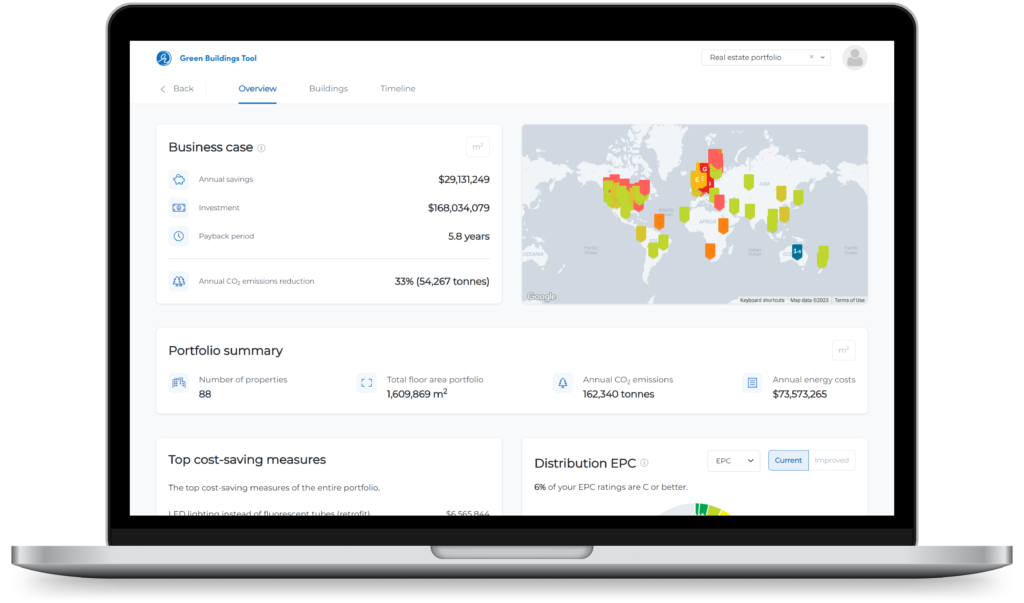

Laws and Programmes impacting Australian Carbon Reporting and Energy-efficient Real Estate in 2023
In recent years, the importance of environmental, social, and governance (ESG) considerations has grown significantly within the real estate industry. We have previously described how this has led to new European frameworks and regulations. Australia is also undergoing significant changes in relation to ESG and its impact on real estate investors, lenders, and financial institutions. To better understand the landscape, it is important to familiarise ourselves with the key frameworks and regulations governing ESG reporting in the Australian real estate sector.
In this article, we will delve deeper into the Australian context and explore how these developments are affecting the various stakeholders. Additionally, we will highlight the role of the CFP Green Buildings Tool in supporting efforts to improve energy efficiency and carbon emissions reporting in Australia.
1. NABERS – One of Australia’s most impactful frameworks for energy efficiency assessment and reporting is the National Australian Built Environment Rating System (NABERS). NABERS provides a comprehensive rating system that assesses and benchmarks the environmental performance of buildings, including energy efficiency, water usage, waste management, indoor environment quality, and more. NABERS Energy ratings are mainly influenced by energy consumption. It enables real estate stakeholders to indicate and improve the sustainability of their properties, making it an essential tool for ESG reporting.
2. CBD Program – Subsequently, the Commercial Building Disclosure (CBD) program is a mandatory regulatory scheme implemented by the Australian government. CBD requires building owners or lenders to obtain and disclose energy efficiency information when selling, leasing, or subleasing office spaces with a net lettable area of 1,000 square meters or more. This program aims to enhance market transparency and encourage energy-efficient decision-making by prospective tenants, thereby driving sustainable practices in the commercial real estate sector.
3. Green Star – Developed by the Green Building Council of Australia (GBCA), the Green Star rating system is an internationally recognised, framework for assessing and certifying the sustainability performance of buildings. It evaluates various aspects, including energy and water efficiency, indoor environment quality, materials, and emissions reduction strategies. Achieving a Green Star rating is not mandatory, but demonstrates a commitment to sustainable design, construction, and operation, making it a valuable certification for Australian real estate developers and owners.
4. NatHERs – The Nationwide House Energy Rating Scheme (NatHERS), is an Australian scheme to measure the energy efficiency of a residential dwelling. It is administered by the Department of Climate Change, Energy, the Environment and Water on behalf of the states and territories. Using computer simulations, NatHERS calculates the potential thermal performance of Australian homes on a scale of zero to 10 stars. The more stars, the less likely the occupants will need to artificially cool or heat their homes to feel comfortable. Simulations allow to determine the heating and cooling loads throughout the year and how the dwelling performs according to the particular climate zone.
5. Carbon Neutral Certification – The Australian government’s Climate Active program provides a pathway for organisations to achieve carbon neutrality. Carbon neutrality certification signifies that a company has measured its greenhouse gas emissions, implemented reduction strategies, and offset the remaining emissions through other projects. This certification is particularly relevant to real estate companies aiming to mitigate their carbon footprint and contribute to national emissions reduction targets.
State-specific commitments and regulations to achieve net zero
Australia has committed to achieving net zero emissions by 2050 and will reduce greenhouse gas emissions by 43% below 2005 levels by 2030. Each Australian state has stated or made a commitment to reach net zero by 2050. In addition to Australia’s 2030 emissions reduction target of 43% below 2005 levels, each state has also set interim emissions reduction targets by 2030: NSW 50%, Vic 50%, Qld 30%, SA 50%, WA 80% (below 2020 levels), ACT 65 – 75%, Tas net zero in 2015.
In addition to the frameworks mentioned above, it is important to consider state-specific regulations governing energy efficiency and carbon emissions reporting. For instance, the Victorian Residential Efficiency Scorecard requires homeowners to obtain an energy efficiency rating before selling or leasing their properties. Similarly, New South Wales has the Building Sustainability Index (BASIX) that requires sustainable design and construction standards for residential developments.
Committing to these (and future) frameworks and regulations
As sustainability becomes increasingly critical in the Australian real estate sector, understanding the frameworks and regulations surrounding energy efficiency and carbon reporting is essential. There is a growing emphasis on sustainability and green building practices. The industry is likely to witness more regulations in the future. Navigating through these frameworks and regulations provides stakeholders with a complete approach to measuring and improving ESG performance.

CFP Green Buildings has developed the Green Buildings Tool, which helps real estate investors, lenders and financial institutions embrace such frameworks and regulations.
Through the platform, they can demonstrate their commitment to sustainability, enhance market competitiveness, and contribute to a more environmentally conscious future for Australia’s built environment. The Tool gives quick and scalable insights into energy and gas consumption, carbon emissions, NABERS ratings, and offers a business case with suggested measures for improvement.
Please reach out for a personalised demo of the Green Buildings Tool to see how it can offer value for your business and real estate (clients).






